The Ardennes usually has snow on the highest elevations in wintertime during the months January-February. Jas is eager to see the snow so we plan a trip to Baraque Michel, according to the media where there is still snow in March, exceptionally.
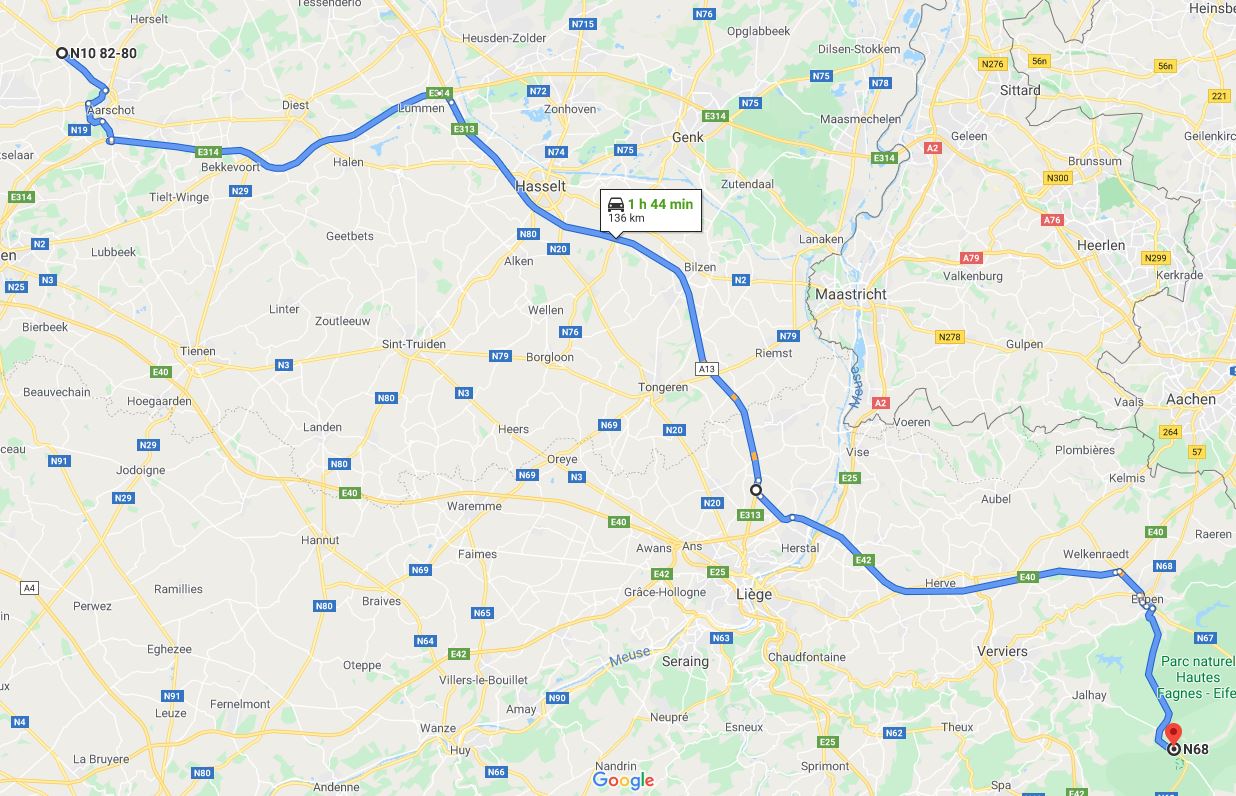
 Morning start
Morning start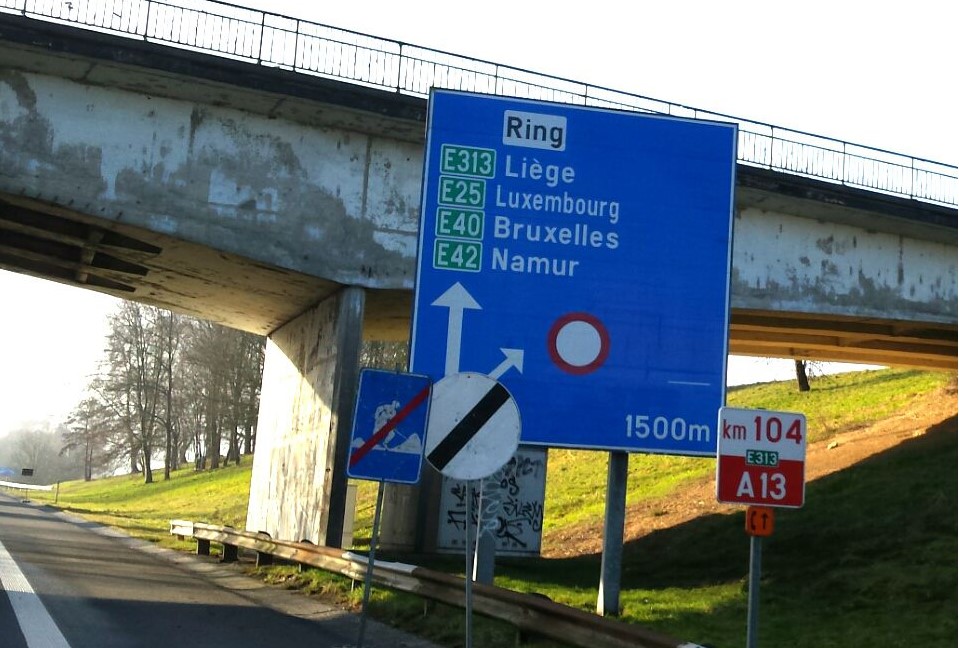 Drivng direction Liège
Drivng direction Liège Going direction Verviers/Aachen
Going direction Verviers/AachenIn Liège we have to be alert. There is shortcut avoiding the traffic in city. Follow direction to Verviers. Get off the highway at Eupen. Following the direction "Malmedy" takes us to Baraque Michel, our destination.
The place in 2015 was a rough parking lot with accross the street a Cafe/Restaurant and Chapel far from the road. A sigh explains the walking routes and what to do and not to do. The area is called "Nature reserve High Fens". At the far end of the parking lot, a foodtruck is parked selling Fries.
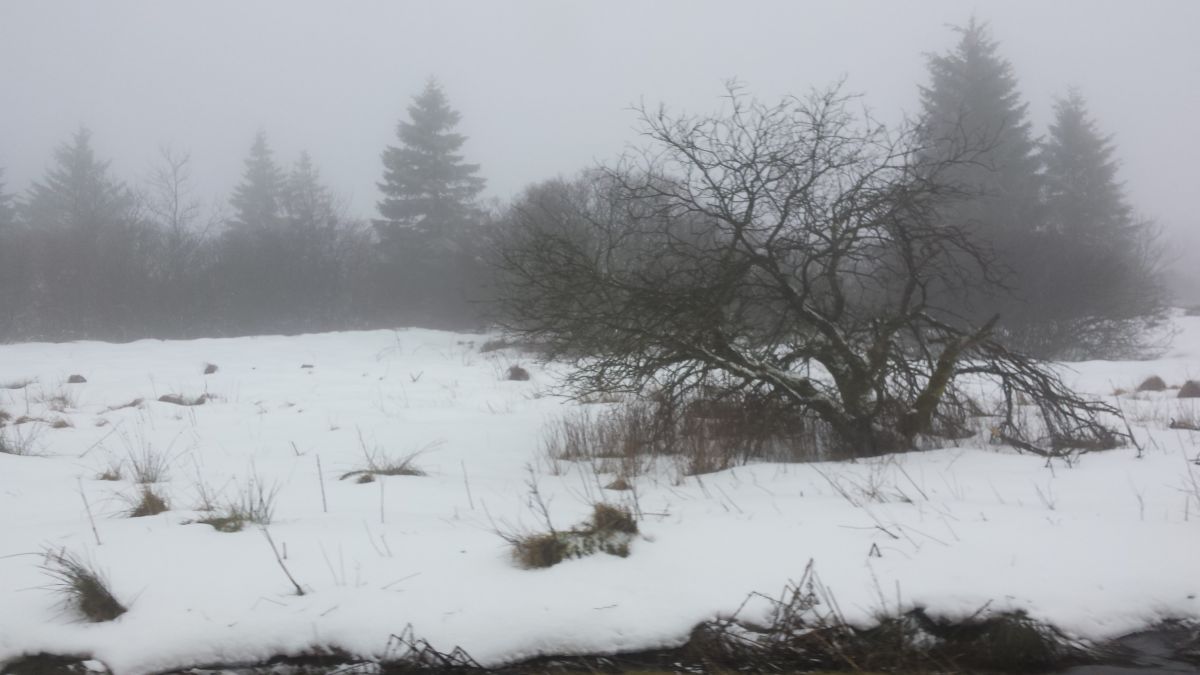 Some one is getting excited seeing the snowy fields.
Some one is getting excited seeing the snowy fields.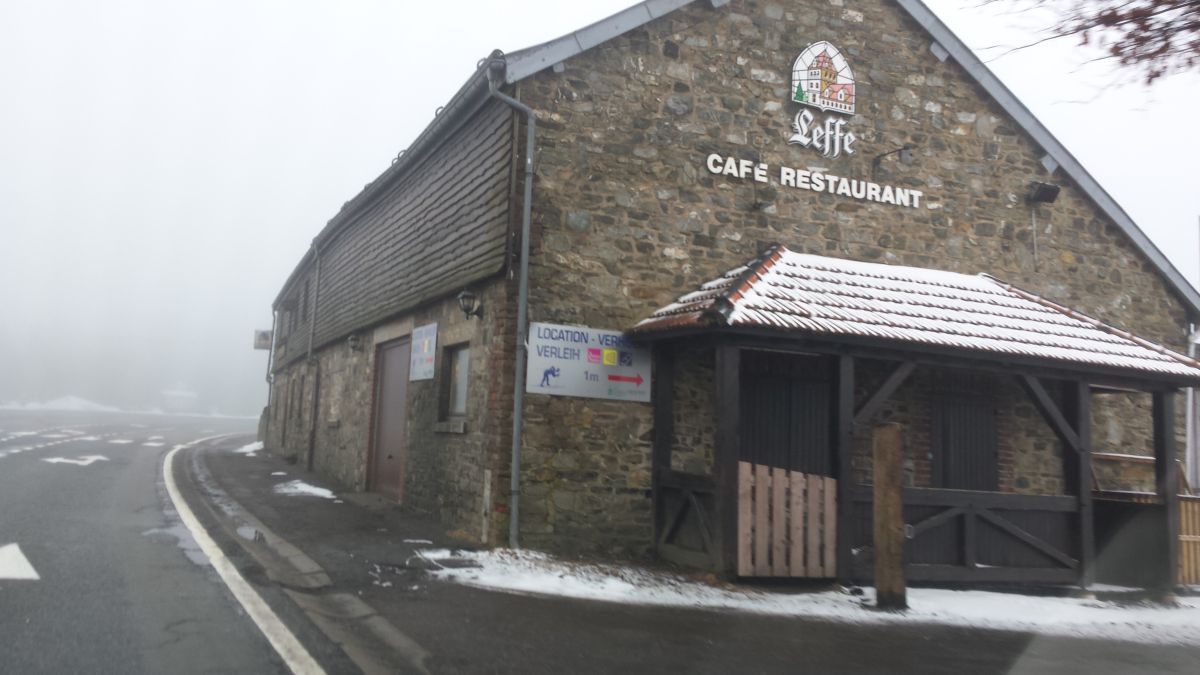 Arriving at Baraque Michel. Only one building housing Cafe/Restaurant
Arriving at Baraque Michel. Only one building housing Cafe/Restaurant 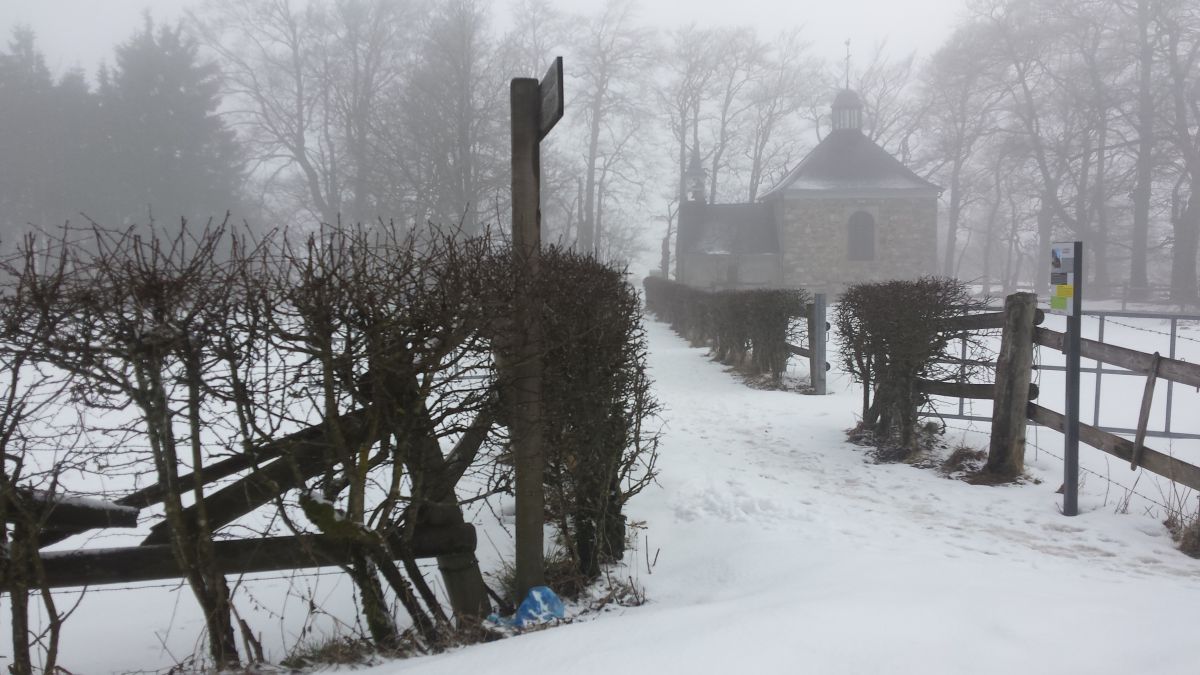 A chapel in the distance
A chapel in the distance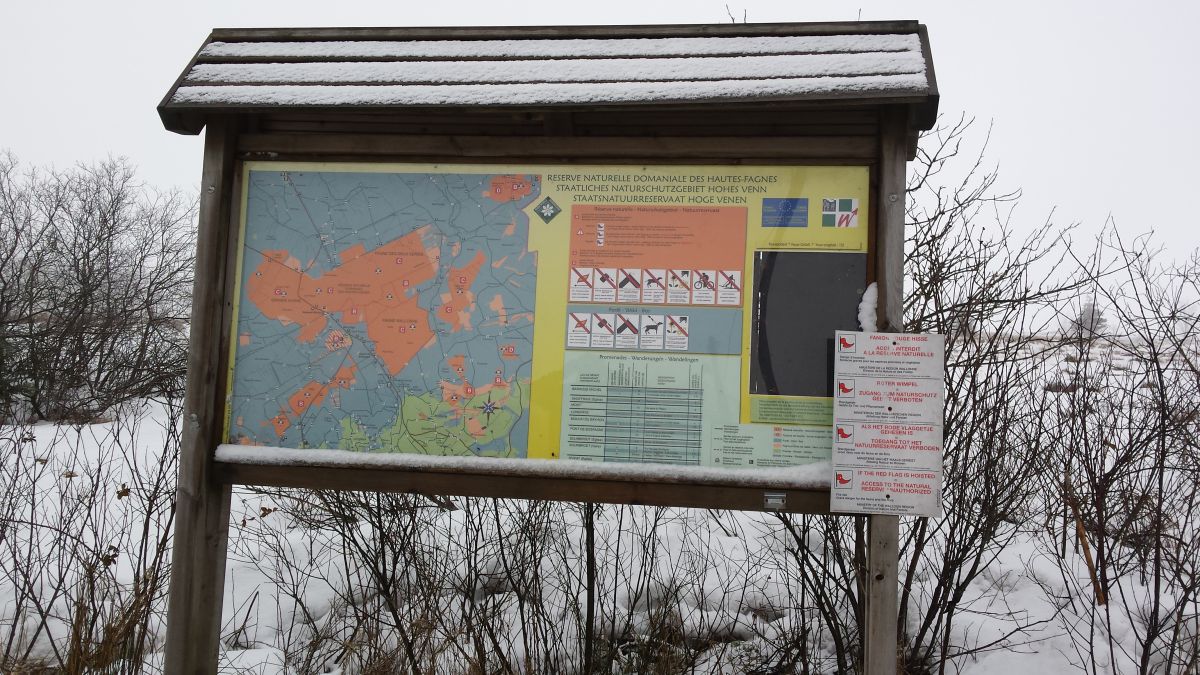 Info board about the Nature Reserve.
Info board about the Nature Reserve.The Cafe and the foodtruck are both closed. No choice but return home. On the way, a stop in the city of Hasselt breaks the long drive.


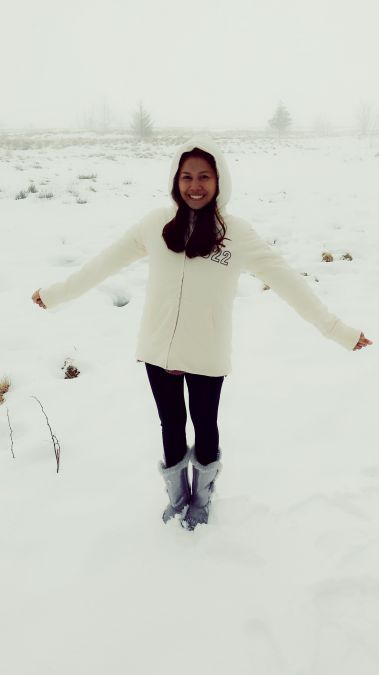

 The newly developed Baraque Michel parking lot and access.
The newly developed Baraque Michel parking lot and access.
The High Fens
The moor landscape of the High Fens has been a protected area since 1957. That means that this plateau, 5,000 hectares in size, is not only the oldest conservation area in Wallonia, but also probably the best known nature reserve in Belgium and the jewel of the German-Belgian High Fens – Eifel nature park. Year after year, tourist magnets such as the Signal du Botrange, the highest point or 'roof' of Belgium, and the Baraque Michel with all the stories that surround it, attract the young and the not so young to the High Fens.
But in fact there's a lot more to be discovered! 67,000 hectares of woodland and moor characterise the High Fens - Eifel region, in which less known attractions from primaeval times and small conservation areas often steal the show from their more famous siblings when it comes to natural beauty, the fascination of their legends or their ecological value.Prehistory in the hills
There are still some authentic wilderness areas left in the High Fens. And they're right in the middle of the rectangle formed by the towns of Eupen, Monschau, Malmedy and Spa. In the core zone, the slate mountain ridge, reaching heights of up to 694m, stretches skyward. This is where the highest point of the Benelux countries is, too. Some 10,000 years ago, at the end of the last Ice Age, high moors formed on this barren ground which holds water so well. And they still characterise parts of the immense plateau of the Fens today, exuding a rare, primaeval flair.
The plateau is framed by small fenland villages and towns with centuries of history. But the remaining, ancient wilderness areas of the moor are more or less unadulterated, original and wild, and the traces of human settlement they bear have been but minor to this very day. No wonder, because in this centuries-old primaeval landscape it is vastness and barrenness that predominate. Especially in winter, the fens seem inaccessible and, in some unreal way, as if they had come from another age. And that's exactly what it is that increases their charm for hikers and nature-lovers, who feel as if they had been transported back into a dim and distant past for a while.
The soil is low in nutrients, the climate has features which are almost arctic. Here, the clock seems to tick more slowly than elsewhere. Growth proceeds at snail's pace. But how could it be any different in a region which is ruled by winter for eight months of the year and where only four months remain for the seasons of spring, summer and autumn?


Comments powered by CComment